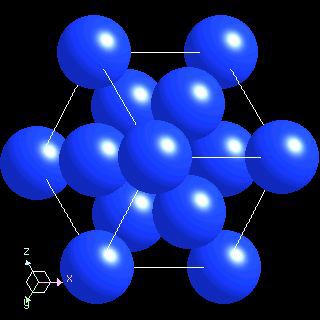- Argon (Ar) Atomic Data for Argon (Ar) Atomic Number = 18 Atomic Weight = 39.948 Reference E95: Isotope: Mass: Abundance: Spin: Mag Moment: 36 Ar.
- Argon (Ar) exists as a colourless, odourless gas and is chemically inert. It has the atomic number 18 in the periodic table and belongs in Group 18, the Noble Gases. It is a non metal with the symbol Ar.
Key Difference – Argon vs. Oxygen
Argon is a chemical element with symbol Ar and atomic number 18. It is in group 18 of the periodic table and is a noble gas. Argon is the third most common gas in the Earth's atmosphere, at 0.934% (9,340 ppmv), making it over twice as abundant as the next most common atmospheric gas, water vapor (which averages about 4000 ppmv, but varies greatly), and 23 times as abundant as the next most. Argon is the third element of the eighteenth column of the period table. It is classified as a noble gas. The argon atom has 18 electrons and 18 protons. Its outer shell is full with eight electrons.
Argon and Oxygen are two chemical elements in the periodic table. They are both gaseous elements, where Argon is in the noble gas family and Oxygen is from chalcogen group in the periodic table. Argon is an inert gas whereas oxygen is a very reactive gas. Oxygen is one of the most abundant elements on this planet while Argon is one of the most abundant noble gases. Argon is produced when high purity oxygen is manufactured. They have relatively close boiling points, but their chemical properties are very different from each other. As you can observe the differences between Argon and Oxygen are numerous. This article attempts to provide you with a clarified understanding of the differences.

What is Argon?
Argon (Ar) is a member of a special family; they are called “rare”, “noble” or “inert” gases. All of the gases in this family have a totally filled outermost shell and their chemical reactivity is almost zero. Argon is a monatomic, colourless, odorless, tasteless and non-toxic gas. Argon is slightly soluble in water. Its abundance in the atmosphere is nearly 0.934% by volume. Argon is considered as the most abundant inert gas. All the members of noble gas family emit light when they are electrically excited; in this case Argon produces a pale blue-violet light.
What is Oxygen?
Oxygen can be considered as one of the most abundant element on the earth. About 21% of free elemental oxygen is present in our atmosphere. In addition, it is combined with other compounds such as water and minerals. Even our human body functions using oxygen and it contains 65% of oxygen by mass. Oxygen naturally occurs as diatomic gaseous molecules, O2 (g). It is a colorless, tasteless and odorless gas with its unique chemical and physical properties. The density of oxygen is greater than air and has a very low solubility in water.
The chemical reactivity of oxygen is very high; it reacts with nearly all elements under different conditions, except noble gases and some of less reactive metals. Oxygen is the most reactive element next to fluorine (F).
What is the difference between Argon and Oxygen?
Properties:
| Property | Argon | Oxygen |
| Atomic number | 18 | 8 |
| Electronic configuration | 1s² 2s² 2p63s² 3p⁶ | 1s² 2s² 2p⁴ |
| Boiling point | –185.9°C(–302.6°F) | -182 °C (-297 °F) |
| Melting point | -189 °C (-308 °F) | -218 °C (-361 °F) |
Heaviness:
Atomic Number Of Argon-40
Argon: Argon is 1.4 times as heavy as air; it’s not breathable as oxygen and can cause suffocating by setting in the lower parts on the lungs.
Oxygen: Oxygen also denser than air, but it is a light weight gas that is breathable.
Uses:
Argon: Argon is an inert gas even at high temperatures, and for this reason, it is used in some critical industrial processes such as in the manufacturing of high quality stainless steel and in producing impurity free silicon crystals for semiconductors. It is widely used as an inert filler gas in light bulbs. It remains un-reactive even when the bulb is heated to high temperatures.
Oxygen: Oxygen is widely used in metal industry with acetylene and other fuel gases for metal cutting, welding, melting, hardening, scarfing, and cleaning. Gaseous oxygen or oxygen enriched air is used in the steel and iron manufacturing, in the process of chemical refining and heating to remove carbon, and in the oxidation reaction.
Petroleum industry also extensively uses oxygen as a feed to react with the hydrocarbon to produce chemicals such as aldehydes and alcohols.
What Is Atomic Number Of Argon
Image Courtesy:

1. Electron shell 018 Argon – no label By commons: User: Pumbaa (original work by commons:User:Greg Robson) [CC BY-SA 2.0], via Wikimedia Commons
2. Electron shell 008 Oxygen (diatomic nonmetal) – no label By DePiep (Own work) [CC BY-SA 3.0], via Wikimedia Commons
Related posts:
